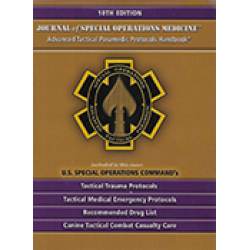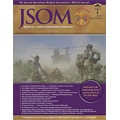Combat Trousers as Effective Improvised Pelvic Binders A Comparative Cadaveric Study
Loftus A, Morris R, Friedmann Y, Pallister I, Parker P 17(3). 35 - 39 (Journal Article)
Background: Improvised explosive devices and landmines can cause pelvic fractures, which, in turn, can produce catastrophic hemorrhage. This cadaveric study compared the intrapelvic pressure changes that occurred with the application of an improvised pelvic binder adapted from the combat trousers worn by British military personnel with the commercially available trauma pelvic orthotic device (TPOD). Methods: Six unembalmed cadavers (three male, three female) were used to simulate an unstable pelvic fracture with complete disruption of the posterior arch (AO/OTA 61-C1) by dividing the pelvic ring anteriorly and posteriorly. A 3-4cm manometric balloon filled with water was placed in the retropubic space and connected to a 50mL syringe and water manometer via a three-way tap. A baseline pressure of 8cm H2O (average central venous pressure) was set. The combat trouser binder (CTB) and TPOD were applied to each cadaver in a random sequence and the steady intrapelvic pressure changes were recorded. Statistical analysis was performed using the Wilcoxon rank-sum test and a paired t test depending on the normality of the data to determine impact on the intrapelvic pressure of each intervention compared with baseline. Results: The median steady intrapelvic pressure achieved after application of the CTB was 16cm H2O and after application of the TPOD binder was 18cm H2O, both of which were significantly greater than the baseline pressure (ρ < .01 and .036, respectively) but not significantly different from each other (ρ > .05). Conclusion: Pelvic injuries are increasingly common in modern theaters of war. The CTB is a novel, rapidly deployable, yet effective, method of pelvic binding adapted from the clothes the casualty is already wearing. This technique may be used in austere environments to tamponade and control intrapelvic hemorrhage.


 Español
Español 




